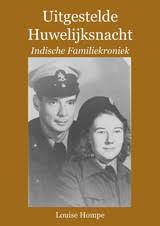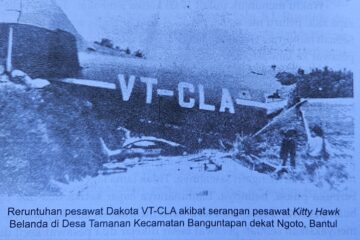
This article is an English abstract of the two-part Dutch biography of Jack and Truus Hompe, published on IndischHistorisch.nl and based on Louise Hompe’s family chronicle Uitgestelde huwelijksnacht. Their story shows how the Netherlands, Australia and the Netherlands East Indies intersected during the final phase of the Second World War.
Early background and wartime separation
Jack Hompe (born Batavia, 1917) came from a long-established Indo-European family in the Netherlands Indies. His grandfather, Jacobus Hendricus Hompe, left for the Indies in 1884, and Jack’s father, Willem Eduard, became a civil servant after being raised in the Vincentius orphanage in Batavia. Jack was one of six children.
His education prepared him for service in the colonial administration. After attending the brothers’ boarding school in Ambawara and the Canisius College in Batavia, he was one of only seventeen Indo-European boys selected in 1937 to study Indology at the Rijksuniversiteit Utrecht. The program, partly supported by Dutch commercial interests, trained future officials for the Binnenlands Bestuur (Netherlands Indies civil administration). His upbringing, language abilities and social formation matched the expectations for such work.
During the war his entire family was interned by the Japanese; his father died in 1944 when the ship Junyo Maru was torpedoed. Jack remained in the Netherlands, completing his studies before the university was closed.
Mobilisation and reunion in Queensland
After working in Den Bosch and Breda, Jack was called up on 15 March 1945 for service in the Netherlands East Indies as an officier voor speciale diensten (officer for special duties). His training made him urgently needed in the restoration of civil authority after Japanese occupation.
Truus Hoyinck, whom Jack had met during his civilian employment, joined the Vrouwenkorps (Women’s Corps of the KNIL) with the rank of sergeant-major in order to follow him. As a medical analyst she was assigned to the medical service.
Jack travelled ahead, and the couple met again at Camp Columbia in Brisbane at the end of July 1945. They married there in the Catholic church. Camp Columbia served as a Dutch staging centre, it was a place where Dutch personnel sometimes reunited or formalised partnerships before redeployment.
Camp Columbia and NICA mobilisation
Camp Columbia in Brisbane was the main Dutch staging base for the Netherlands Indies Civil Administration (NICA), which had been organised in Australia to prepare civil officials for the return to the Netherlands East Indies. Jack passed through the camp at the same time NICA teams were being mobilised. Although the family account does not specify whether he received NICA instruction there, he deployed to North Celebes alongside NICA personnel and carried out work consistent with their civil–military responsibilities. From this same Dutch staging environment, Truus was deployed as a medic to join him later in Manado.
Arrival under Australian authority
After their marriage, Jack continued to Hollandia in Dutch New Guinea, where he witnessed the Japanese capitulation. He then travelled to North Celebes (now North Sulawesi), landing at Manado together with a detachment of Australian troops, Sangirese KNIL soldiers and NICA staff.
Because the Dutch were not yet able to re-establish authority immediately after the Japanese surrender, Australian forces were the first to take over regional control. Jack served as liaison officer between the Dutch and Australian militaries in this transitional phase. The Australian commanding officer, who initially worked closely with the Dutch contingent, soon fell ill with malaria, but Australian responsibility for the region continued until a later handover to Dutch civil and military authorities.
Truus Hompe in the Minahassa
Truus arrived in Manado in December 1945. As Medical Supply Officer, she distributed medicines and relief goods to Catholic, Protestant and public hospitals and schools across the Minahassa. Her work required extensive travel by jeep and supply carriers, and she quickly became aware of shortages and growing unrest among civilians and soldiers.
Tension surrounding NICA
The Hompe narrative makes clear that NICA was not well received by many Indonesians. The population associated NICA with the old colonial administration and viewed its return with suspicion or outright hostility. This contributed to the volatile atmosphere Jack and Truus encountered, especially as NICA attempted to resume administrative functions in areas where political sentiment had changed dramatically during the Japanese occupation.
Australian influences and the uprising
Conditions were further shaped by experiences Indonesian soldiers had gained in Australia. KNIL troops who had spent the war at Camp Casino in New South Wales returned with different expectations regarding pay and treatment. It was also widely known in Manado that Australian harbour workers had refused to load Dutch ships heading to Indonesia, a stance that resonated strongly among local populations and soldiers.
These factors formed part of the background to the uprising by Indonesian onderofficieren (non-commissioned officers, NCOs). Their demand for equal pay and control of supplies led to the internment of Dutch officers and administrators, including Jack, in the Menado tangsi (barracks).
Internment and evacuation
Jack, together with other Dutch administrators and officers, was detained during the uprising. Truus, who was not interned, remained active in efforts to maintain supplies and assist those around her, sometimes travelling with Red Cross markings. As the situation deteriorated, the Hompes were transported by boat to Morotai, where they were housed in baracks before eventually returning to resume their duties.
A Dutch–Australian wartime pathway
The experiences of Jack and Truus Hompe show how Dutch wartime routes passed directly through Queensland. Their marriage at Camp Columbia, Jack’s liaison role with Australian forces, the Australian-led takeover of the region before the Dutch returned, and the political influence carried by Indonesian soldiers who had lived in Australia all shaped the conditions they encountered in North Celebes.
Their story demonstrates the brief but significant role of Brisbane as the intersection point where Dutch personnel prepared for the final and most difficult years of the Netherlands East Indies.


